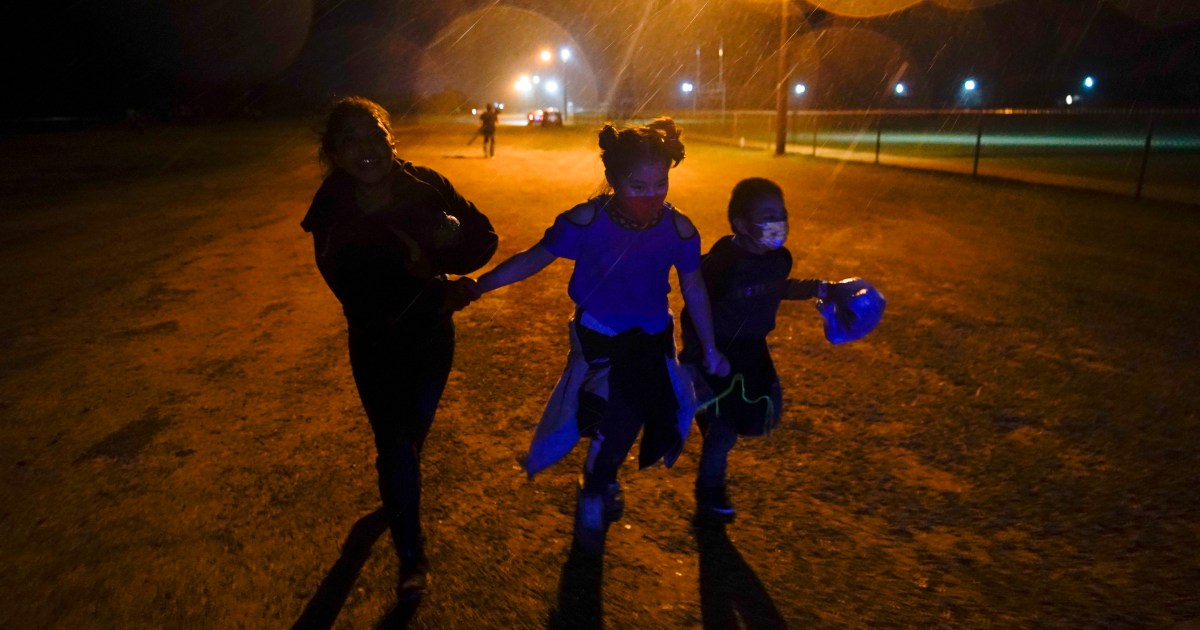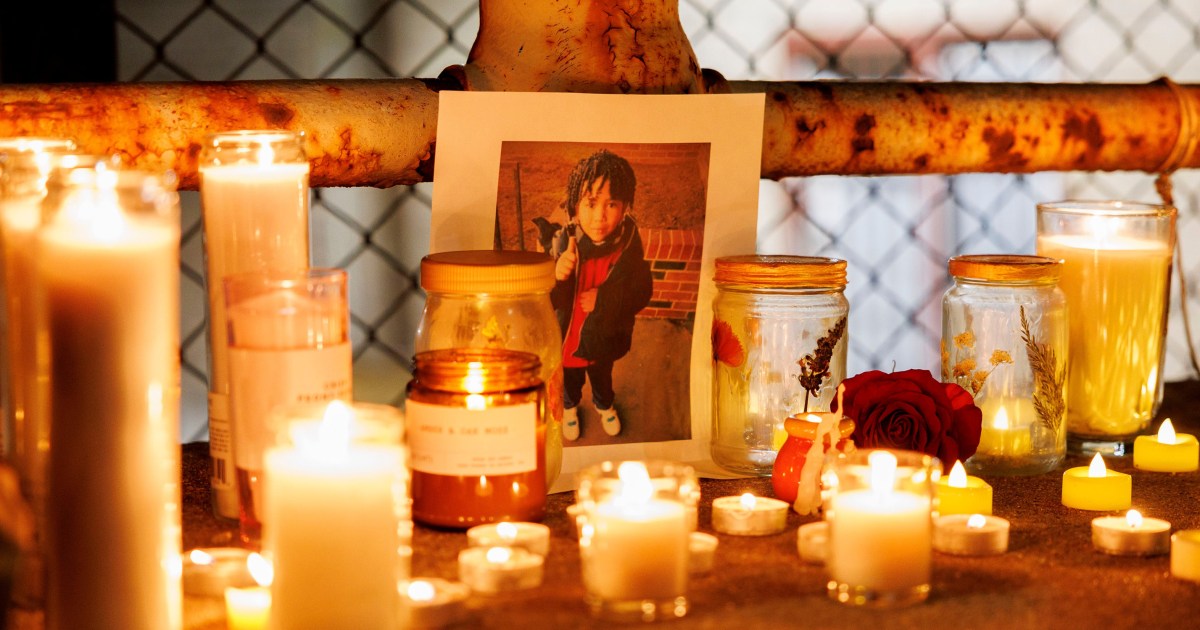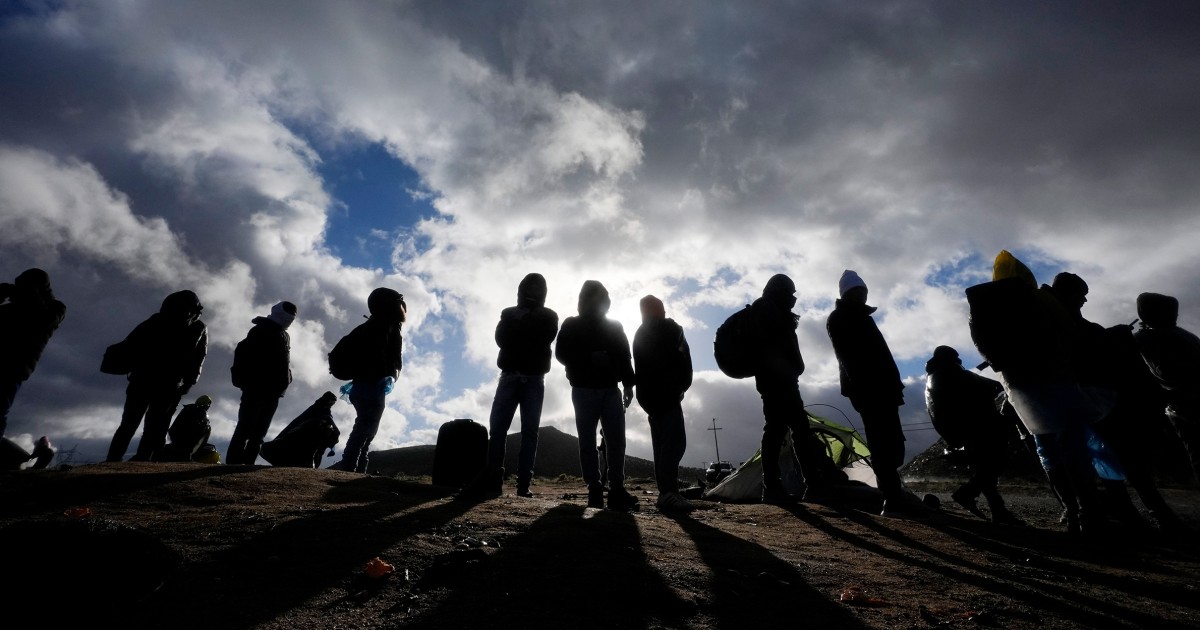LAREDO, Texas.– His body is slumped under a tree on a huge Texas ranch, with his arms spread as if he had searched for air.
The sun has blackened his face and insects have covered his limbs.
The officials find in their pockets $ 42, several documents and a Salvadoran passport.
They know from the family that raised the alert that this man passed through here less than three days ago, but the group and the coyote left him behind.
An acquaintance shared the approximate location from where he said goodbye.
They were near Falfurrias, Texas, trying to avoid a Border Patrol checkpoint.
Sheriff's Office deputies move the body, fingerprint it, and
test it for COVID-19
.
The body of a Salvadoran migrant that was found almost three days after his group and his coyote left him behind, near Falfurrias, Texas. Damia Bonmatí
The tests have become a new routine at various points on the border between Mexico and the United States.
As border counties lead in immunization against COVID-19 in Texas, local authorities see migrants still battling the virus.
They know it at the Webb County Coroner's Office:
About 40% of the deceased migrants they received in the past three months had COVID-19 in their bodies
.
It is the morgue that receives the most migrant bodies from Texas and, over the years, has become a benchmark for border deaths.
Here come bodies from 11 counties, including Brooks, where we found the Salvadoran migrant.
Although the statistics of deaths of migrants with COVID-19 is high, it does not include all the deceased.
In some cases, the body is in such an advanced state of decomposition that testing is impossible.
Sheriff Benny Martinez, wearing a hat, and one of his agents receive the body of a young Central American migrant.
They perform a COVID-19 test and take fingerprints.Damià Bonmatí
Webb County has dozens of migrant bodies in its morgue, some awaiting DNA test results for more than a year.
The 'John Doe' and the 'Jane Doe', the deceased without a confirmed identity
, populate the blackboards of this office.
One of the lists is called 'COVID trailer' and is accompanied by a yellow warning that reads: 'Contaminated'.
It refers to a refrigerator that houses only the deceased who had the virus in their body.
The second week of July he kept 24 bodies waiting to be collected or identified.
"This is the busiest time of my entire career," says Corinne Stern, the Webb County Medical Examiner.
As of July 12, they had received 172 bodies of migrants, the same number as in all of 2019, the year that had set a record in this morgue.
"John Doe" and "Jane Doe" is how they classify deceased migrants before confirming their identity.
The process requires calls with family members, support from consulates and the Border Patrol, and sometimes even DNA tests. Damià Bonmatí
At various points along the border, authorities
are finding more bodies than in previous years
.
In the Falfurrias area, about 70 miles north of the Rio Grande Valley, Sheriff Benny Martínez says he has collected 55 bodies, already exceeding the totals for the past three years.
In Arizona, 131 migrants have been found dead so far in 2021, according to the Pima County Coroner's Office.
43 of them were found in June.
High temperatures - and hot flashes such as those seen recently - have traditionally been the worst threat to migrants trying to avoid border authorities on US soil.
Over and over again,
heatstroke and dehydration become enemies along the way
.
Also poisoning since, when they run out of drinking water, they resort to drinking stagnant water or water intended for livestock.
But now the presence of the virus can further exacerbate those risks.
"COVID causes dehydration, raises body temperature.
COVID makes the individual feel nauseous and does not want to eat or drink, it causes fever ... ”, says Dr. Stern.
The doctor has certified that the cause of some recent deaths was COVID-19.
In other cases, the disease is a factor that contributed to the death, that is, it aggravated the fever and dehydration on the way so much that the patient was unable to recover.
The statistics also count the cases of migrants infected with COVID-19 who drowned.
Corinne Stern, Corinne Stern, reviews X-rays of a migrant who died at the border.
Indicates her bra, which she often uses to find her most prized possessions.
Below, the same migrant with a rosary around her neck. Damia Bonmatí
Stern frequently examines the bodies of overweight or diabetic migrants who have not been able to inject insulin on the way.
But if there is one thing that might surprise you and that terrifies you, it is
how ill-prepared they are to hike for hours or days
through the rugged Texas mount and its suffocating heat, which can exceed 110 degrees Fahrenheit.
"The coyotes and guides who bring them to the border are not preparing them for this dangerous journey," says Stern.
“We have seen so many people in June and July dressed in black, with black long-sleeved shirts, black pants, black shoes.
Black absorbs heat
”.
Any concentration of people along the way can spread the virus, Stern says.
In safe houses, coyotes usually group dozens of people in a single room;
they pile migrants into trucks and even rafts that cross the Rio Grande.
"With ten people in a raft, if one of them coughs and has the virus, it can be easily spread," warns the forensic doctor.
The body of a Salvadoran migrant that was found almost three days after his group and his coyote left him behind, near Falfurrias, Texas. Damia Bonmatí
Although they arrive in US cities such as McAllen, Laredo, El Paso or Nogales, there are groups of migrants who try to avoid the authorities at all costs.
They enter the desert and the mountains to surround the thirty Border Patrol checkpoints and the dozens of checkpoints near the southern border.
Human smuggling networks often reach cities further north, such as San Antonio, Houston or Phoenix.
Reaching those areas can also cost several thousand dollars more than simply arriving at the border, as reported to Noticias Telemundo Investiga by migrants, agents and smugglers.
"The disease is going north"
That worries the Brooks County sheriff, where migrant groups are trying to avoid the Falfurrias checkpoint.
"If these people come sick with COVID, they will continue to the interior of the United States and
the disease will go with them,
" says Benny Martínez.
Despite how common arrests are in the area, the sheriff is aware that some of the migrants manage to escape when the authorities detect them.
[Border Patrol Releases COVID-19 Positive Immigrants in Texas City]
The sheriff's office just installed a makeshift morgue in their parking lot due to the high numbers they are seeing this year.
It is a white trailer that works as a refrigerator.
Inside, in portable bunk beds, various bodies of migrants wait to be picked up.
Each of them is tucked into an army green bag, with an identifying tag, sometimes with an ID or a passport attached to the side.
In Brooks County, Texas, they installed this temporary morgue due to the high number of migrants they are finding.Damià Bonmatí
Before putting the bodies in the trailer, several agents practice the new protocol outside, in the July sun, between flies and gusts of a breeze that smells of death.
With a swab, they give the bodies a rapid test for COVID-19.
But despite the higher death toll, the sheriff recalls that dying at the border is nothing new.
In his office they accumulate classifiers divided by years and, in each one, a file and a photo for each deceased.
Some were found in a matter of hours;
others are bones that take years to identify or never will be.
In another room they receive
911 emergency calls from the migrants lost
in the bush or from their families who do not know about them.
The few mobile phone masts in the area prevent many of those calls from arriving, and the rugged geography makes authorities think that many bodies are never recovered.
The sheriff believes that for every body they find in his county, there are five they will never find.
The journalists
Jorge Flores
and
Caleb Olvera
collaborated in the reporting of this note.



/cloudfront-eu-central-1.images.arcpublishing.com/prisa/N32QBNMEAGJFI4NXT32PTC3GUY.jpg)



/cloudfront-eu-central-1.images.arcpublishing.com/prisa/YLOEMFF4HJC23HMOYLNKJIYY3A.jpg)







